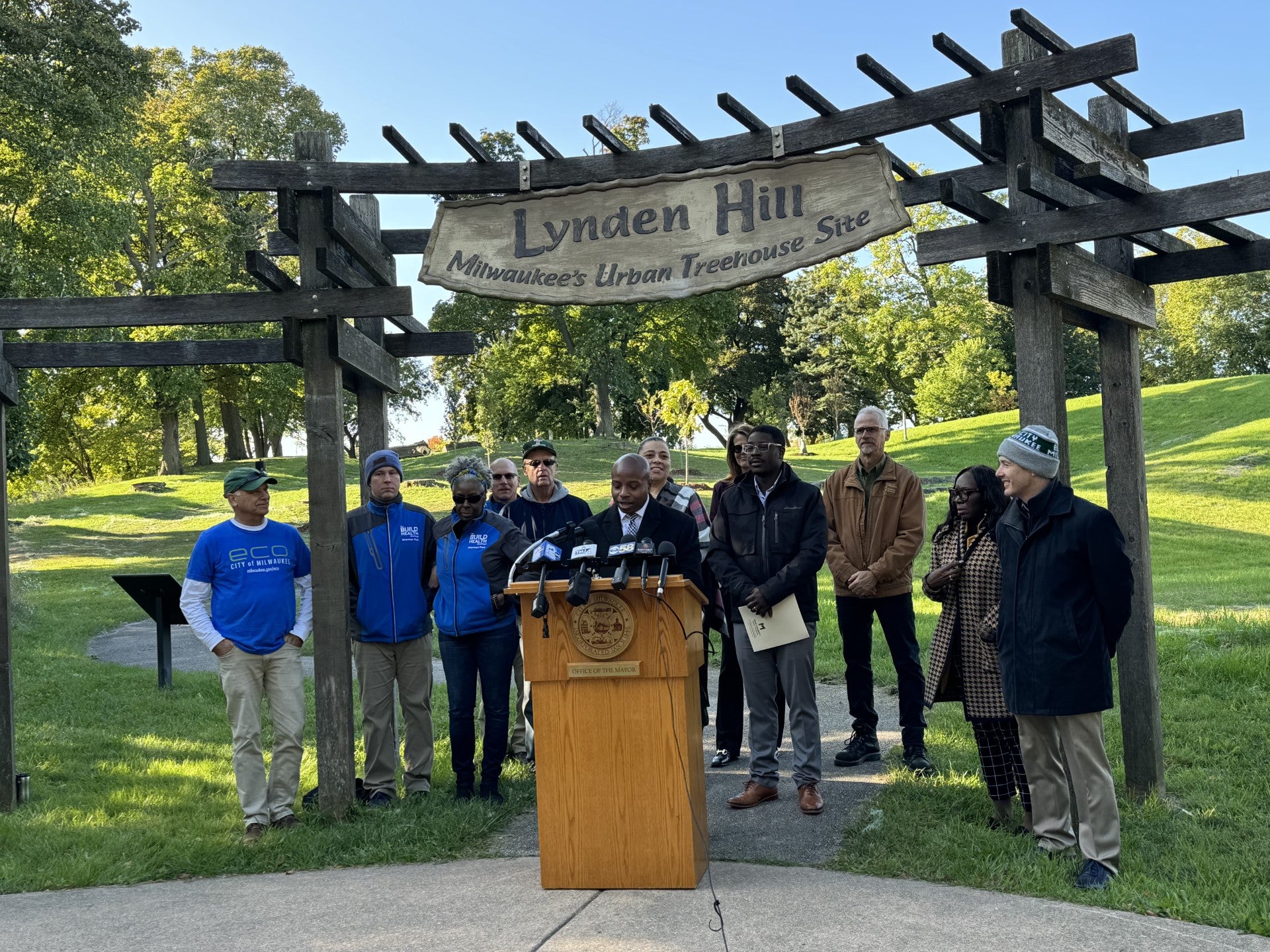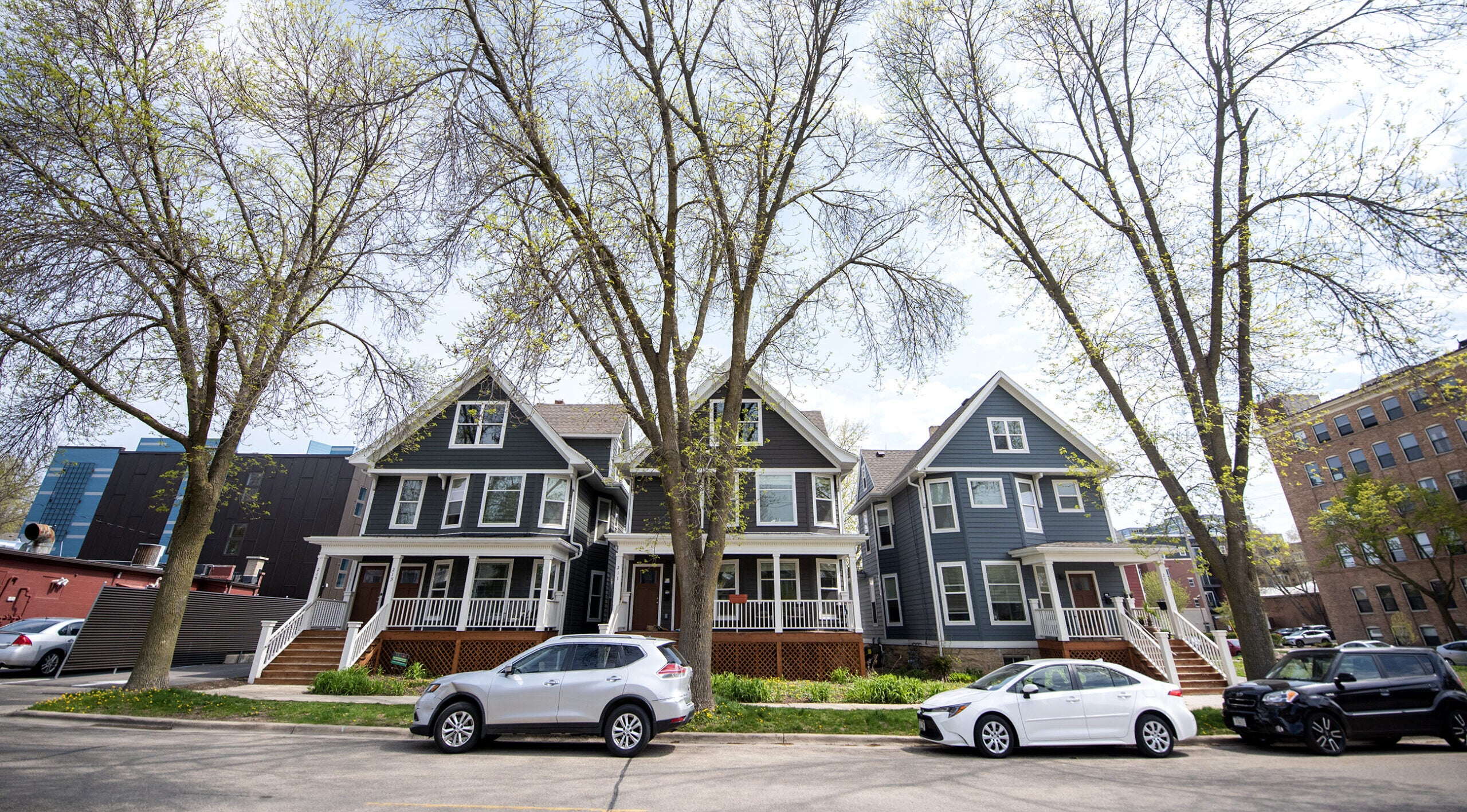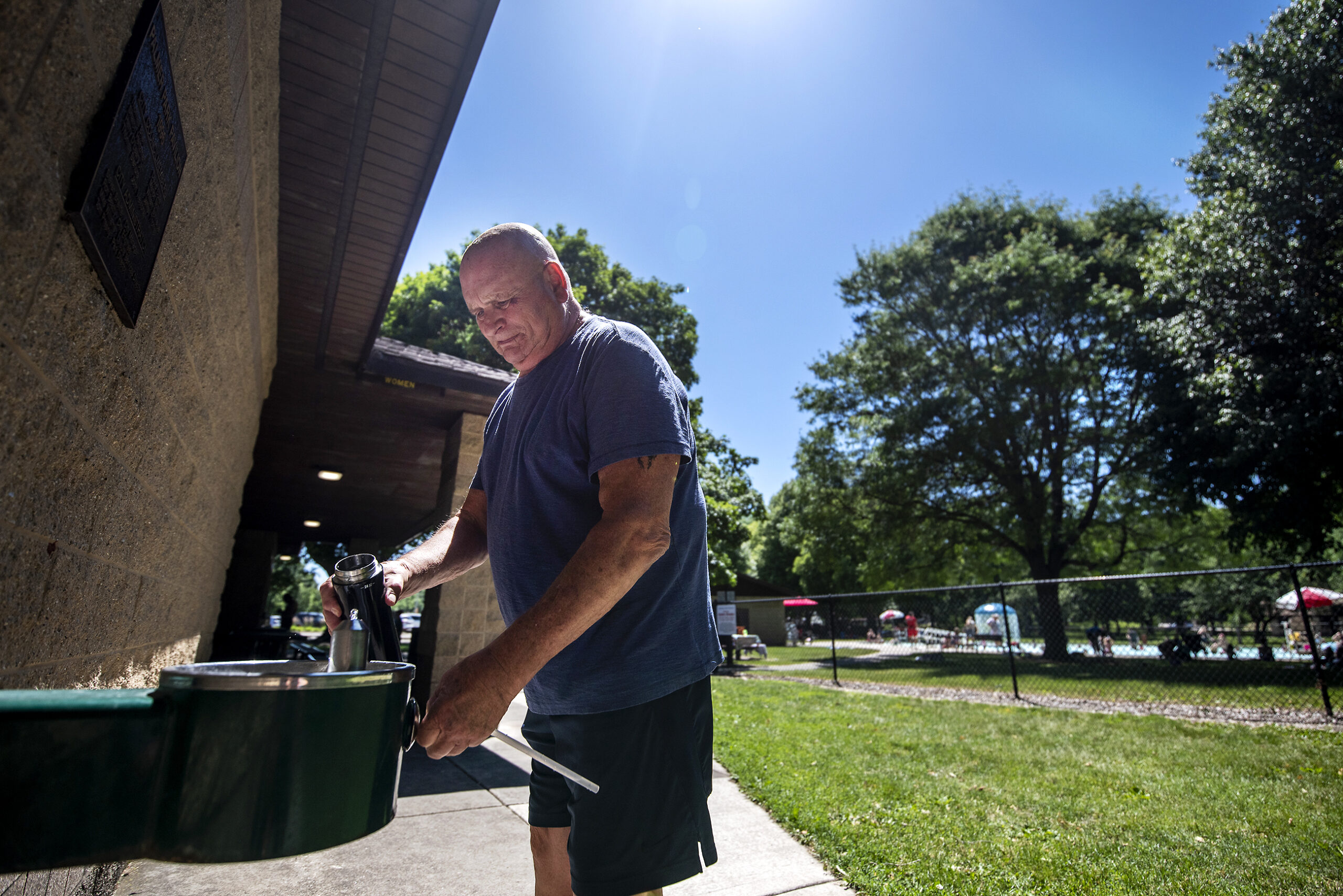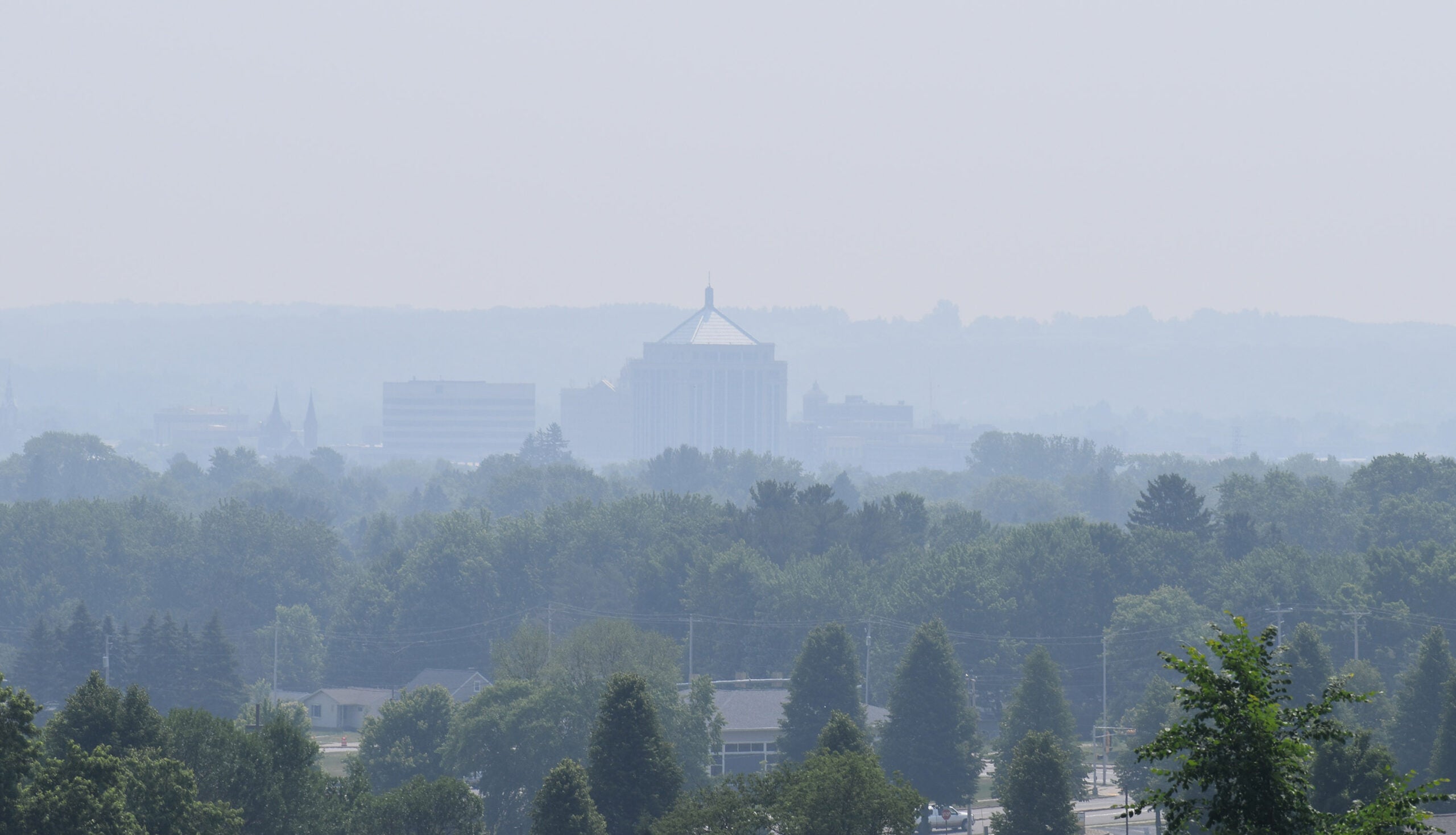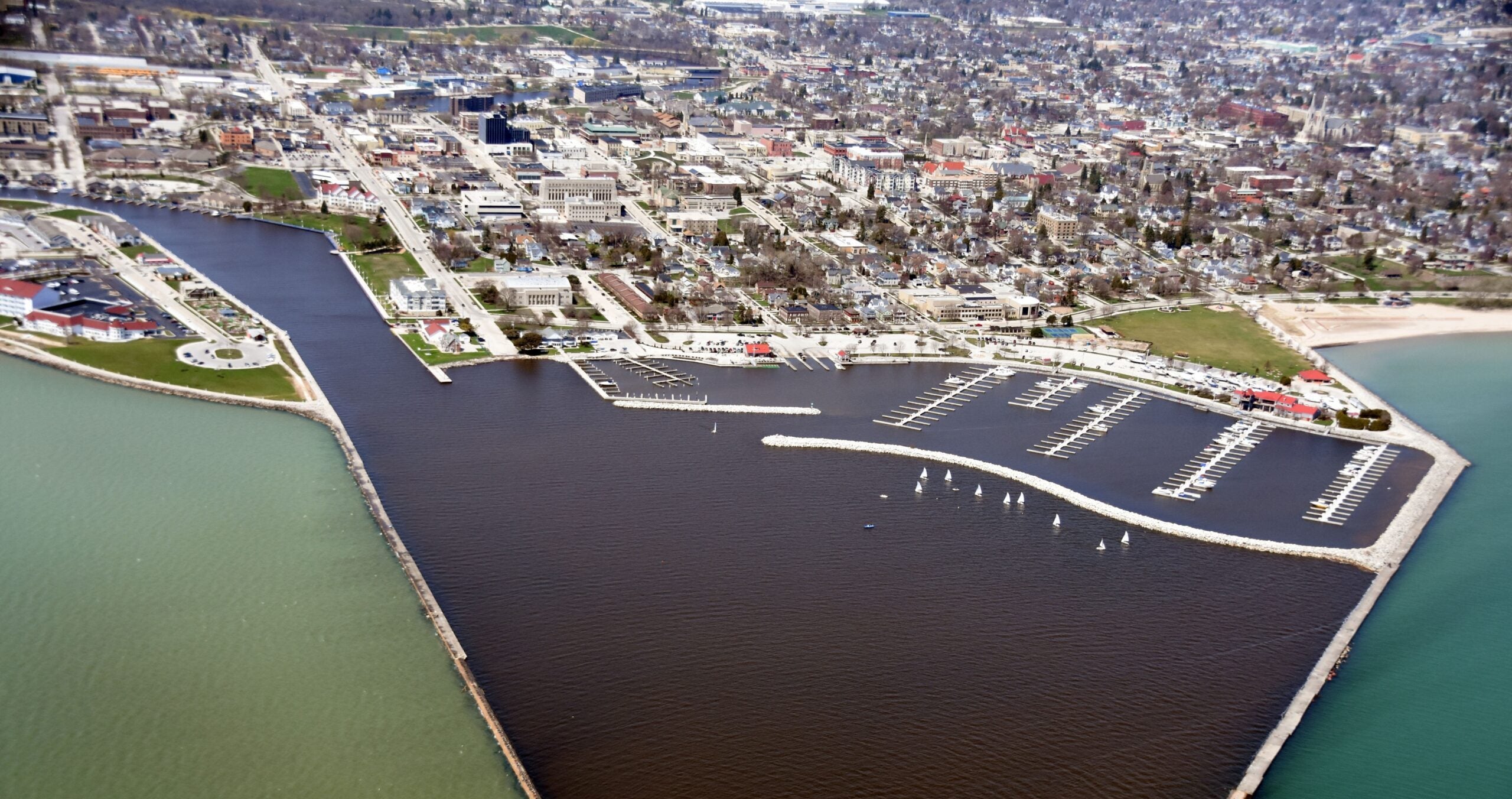The city of Milwaukee plans to use a $12 million federal grant to plant more trees in historically disadvantaged parts of the city.
The grant, received from the U.S. Department of Agriculture, will go toward removing hazardous trees and asphalt and planting more trees in Wisconsin’s largest city.
“With this new grant funding, we are taking the steps that we need to take to make sure that we are restoring our urban tree canopy and improving the residents’ quality of life on an everyday basis,” Milwaukee County Executive David Crowley said during a press conference Monday.
News with a little more humanity
WPR’s “Wisconsin Today” newsletter keeps you connected to the state you love without feeling overwhelmed. No paywall. No agenda. No corporate filter.
The average tree canopy coverage is around 25 percent in the city of Milwaukee. But that figure is much smaller in lower-income areas, according to the city’s Climate and Equity Plan, which was adopted earlier this year. The 53223 zip code, for example, has just 7 percent tree canopy coverage.
The conservation group American Forests identified Milwaukee as one of 20 cities that would benefit the most from increasing tree canopy. Planting more trees can help lead to cooler temperatures and fewer heat-related deaths, and can help mitigate the impacts of climate change, the group found. Some studies have also shown trees can foster a sense of community and improve mental health.
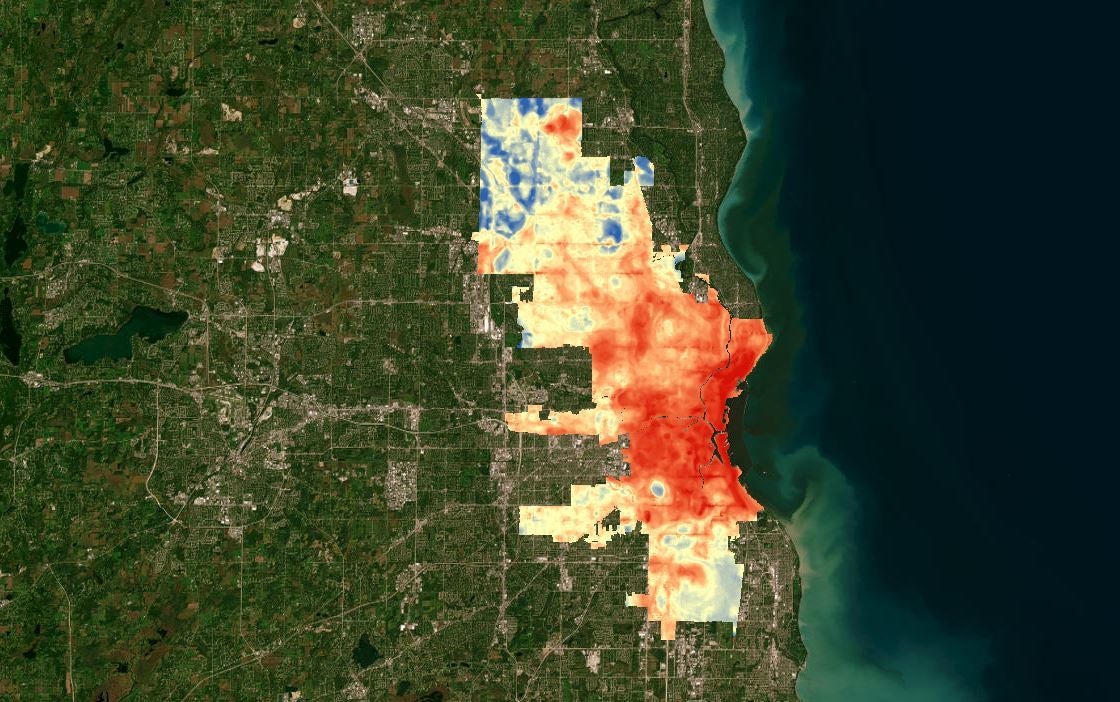
Trees in dense urban areas can also help cool down urban heat islands, as a Wisconsin Department of Natural Resources campaign found heavily developed urban areas of Milwaukee stayed about 10 degrees warmer at night than other parts of the city during hot summer days. Areas that had fewer trees and green spaces and more asphalt and concrete were warmer at night, according to the heat mapping campaign.
Milwaukee Mayor Cavalier Johnson said the money will help the city fight the impacts of climate change. In Milwaukee, the number of days with a heat index above 105 degrees will likely triple by 2050, according to Wisconsin’s Initiative on Climate Change Impacts.
“Unfortunately, it’s folks who live in some of our more challenged neighborhoods that don’t get the benefit of having an expanded tree canopy, so we’ll be working to address that as well as growing jobs in the community,” Johnson said.
‘Even one tree can make a difference’
Dan Buckler, an urban forester with the Wisconsin Department of Natural Resources, said the city maintains around 200,000 trees. He said planting them strategically with the new money can help improve urban heat islands.
“Even one tree can make a difference, depending on where it is,” Buckler said. “These have big benefits to individuals, or just small groups.”
Johnson didn’t share specifics Monday of exactly how the federal funds will be used or how many trees could be planted, but it’s likely that jobs will be created to do the work, he said. He said the work will be done in “disadvantaged areas” as defined by the White House Climate and Economic Justice Screening Tool.
The funds will be used for asphalt depaving projects throughout the city, including at public schools. Paulette Chambers, chief of staff for Milwaukee Public Schools, or MPS, said the school system transforms school yards from pavement to bioswales, permeable pavements and rain gardens every year. They also plant more native trees on those surfaces when possible.
“This project will include the addition of more trees to MPS playgrounds and recreation sites, many of which are used by the community year round,” Chambers said.
Crowley also said the funds will help the city remove diseased and dead trees.
“We have to make sure that we can remove these dead trees because they do pose a risk to both our property as well as our people,” Crowley said.
Planting more trees across the city is a goal of the city’s Climate and Equity Plan, which aims to reduce greenhouse gas emissions by 45 percent in the next seven years and achieve net-zero emissions by 2050.
“Communities with healthy trees experience improved air quality, greater physical activity, reduced cardiovascular and respiratory disease, decreased stress, improved childbirth outcomes, and improved mental health,” the plan says. “Trees and plants also offer climate change mitigation by removing carbon from the atmosphere and storing it within living structures.”
Gov. Tony Evers has a goal to plant 75 million trees in Wisconsin by the end of the decade. More than 22 million trees were planted in the last two years with 12.9 million planted last year, according to an April Wisconsin Public Radio report.
Wisconsin Public Radio, © Copyright 2025, Board of Regents of the University of Wisconsin System and Wisconsin Educational Communications Board.

